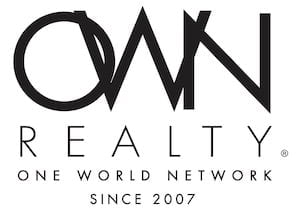Our Guide
- Home
- Our Guide
A 1031 exchange may appear intricate, yet it offers significant tax benefits. Here’s an explanation of its functioning and key considerations. If you’re contemplating the sale of a property that could lead to substantial profits and a substantial tax liability, a 1031 exchange might prove to be a valuable strategy.
What is a 1031 exchange?
A 1031 exchange, named after section 1031 of the U.S. Internal Revenue Code, provides a means to defer capital gains tax when selling a business or investment property by reinvesting the proceeds in a similar property. It is often referred to as a “like-kind” exchange.
What qualifies for a 1031 exchange?
An important stipulation regarding 1031 exchanges is that they generally pertain to business or investment properties. Personal-use properties like your primary residence or a vacation home typically do not qualify. Additionally, securities and financial instruments such as stocks, bonds, debt instruments, partnership interests, inventory, and certificates of trust are typically ineligible for 1031 exchanges.
How to execute a 1031 exchange?
Because a 1031 exchange can be intricate, it is advisable to seek guidance from a qualified tax professional. While you can find detailed rules and information in IRS Publication 544, here is a basic overview of how a 1031 exchange operates and the steps involved.
Step 1: Identify the property for sale A 1031 exchange typically applies only to business or investment properties. Properties used for personal purposes, such as your primary residence or a vacation property, are typically excluded.
Step 2: Identify the property to purchase The property you intend to sell and the property you plan to acquire must be of a “like-kind,” meaning they share the same nature, character, or class, although not necessarily the same quality or grade (further details below). It’s important to note that U.S. property is generally not considered like-kind to foreign property.
Step 3: Select a qualified intermediary The fundamental idea behind a 1031 exchange is to avoid receiving cash prematurely, which would create a taxable event. One way to ensure you do not receive cash until the exchange is completed is to collaborate with a qualified intermediary, sometimes referred to as an exchange facilitator. They essentially hold the funds in escrow until the exchange is finalized, assuming the sale and purchase do not occur simultaneously. The selection of the intermediary is crucial, as a bankruptcy or failure to fulfill their role could result in financial losses and potential tax liabilities.
Step 4: Determine the amount of sale proceeds to allocate to the new property You are not required to reinvest all the sale proceeds into a like-kind property. Typically, you can defer capital gains tax only on the portion you reinvest. If you retain some of the proceeds, you may incur immediate capital gains tax obligations.
Step 5: Adhere to the timeline In most cases, two critical deadlines must be met to ensure that the gain from the sale of your property remains tax-deferred. Firstly, you have 45 days from the sale date to identify potential replacement properties in writing and share this information with the seller or your qualified intermediary. Secondly, you must complete the purchase of the new property within 180 days after the sale of your old property or by the due date of your tax return, whichever occurs earlier.
Step 6: Exercise caution regarding fund control It’s essential to remember that the central principle of a 1031 exchange is to prevent any proceeds from the sale reaching your control, as this would jeopardize the tax-deferral arrangement and potentially lead to immediate tax obligations on the gain.
Step 7: Report the transaction to the IRS You will likely need to submit IRS Form 8824 along with your tax return. This form is where you provide details about the properties involved, establish a timeline, identify the parties participating, and outline the financial aspects of the transaction.
Discover Your Path to Wealth Preservation
Your Tax-Savvy Path to Wealth Preservation
Are you ready to embark on a financial journey that could reshape your real estate investments? Look no further! At Sapphire Investment Solutions, we specialize in turning the complex world of 1031 exchanges into a streamlined, wealth-building opportunity.

 Call us today:
Call us today: